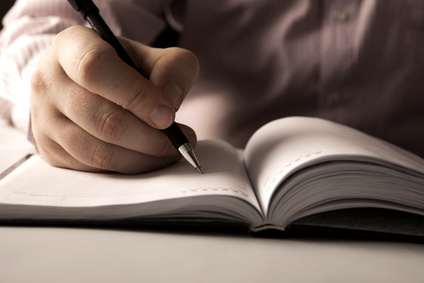Tips for Getting Down the First Draft

2 thought on “Tips for Getting Down the First Draft”
Comments are closed.
Related Post

Enriching Your Story with HistoryEnriching Your Story with History
In the Getting Ready to Write and Authentic Ancestors workbooks, I mentioned historical timelines and their importance in organizing your research and writing your ancestor’s stories. Not only is it important to map your ancestor’s life on a timeline, but also to map world, regional and local history. It’s necessary to consider what was happening in the world around your ancestors and it’s relationship to their life.
I want to spend a few minutes today discussing how we can use historical events to enrich your stories.
Historical events can provide both a background and a setting for your story. However, while these events can add a lot of colour and depth to your story, it’s important to not just insert a historical event in your ancestor’s narrative only because it happened during their life. It’s important to look at how those events may have impacted your ancestor’s life, actions, and reactions. While some events will be easy to include due to your ancestor’s direct relationship to an event, do not discount an event because it did not happen directly to them. It may be happening in the background and influencing their life.
These historical events can happen before, after or during the story. It may be something from the past that sets in motion a current event in your story. Historical events can add richness to your story and can place your ancestor’s life and story within the context of the world. It can also help to establish the tone of your story for your reader. By linking your ancestor’s story to something happening or that has happened, this event may impact them or people around them. It’s important to consider how the event may change their feelings, attitudes, culture, or society.
These historical events may strengthen your story ideas and feed your ancestor’s stories. Perhaps your ancestor’s story will be a political or social statement about abortion, adoption, slavery, corruption in politics or the environment to name but a few. You can look to historical events to help you build your story ideas and theme.
An excellent resource for looking at events in a variety of categories is The Timetables of History by Bernard Grun. This book is organized into seven categories, history and politics, literature and theatre, religion, philosophy and learning, visual arts, music, science, technology and growth, and daily life. It spans from 5000BC up to 1991 and is organized on a year by year basis.
I’ve also provided you with a small chart below for you to download and use if looking at the historical events of your ancestor’s life and analyzing them for the impact on their lives. Completing this chart might help you to shape your story with regards to plot, theme, and your story question.
Don’t limit yourself to just the large world events. Regional and local historical events must also be considered. We often think wars and national tragedies when discussing historical events. However, a local storm that causes devastation to area crops or local politics may play a significant role in your ancestor’s life and decisions.
Historical events provide context and richness to your story, and it places our ancestor in the world making them more real and believable to your reader.
Here’s the timeline with a couple of examples filled in.

The Writer’s NotebookThe Writer’s Notebook
The writer’s notebook, it’s not a diary or a journal but a valuable tool to help you develop your writing skills. It’s a place to be a writer.
A writer’s notebook can help you develop your writing skills through a variety of ways.
- A writer’s notebook will help you to pay attention to the world around you. By recording events, ideas, dialogue, people that you come across in your day, you become more aware of your surroundings, the setting, how people interact. In your notebook capture what moves you in the day. Perhaps it was a conversation you overheard, or person you saw, or something in nature that caught your attention. Write it down, explore what it means to you. Practice transforming what you see, hear, smell, touch, and taste during your day in to words on the page.
- A writer’s notebook will help you develop ideas. Your book is a place to capture seed ideas. Whether they are ideas for stories or scenes or even if you’re not sure what you plan to do with them. It’s a place to nurture ideas, keep them safe until you’ve ready to explore them further.
- A writer’s notebook can help you develop your creative writing skills. Practice scene writing, dialogue and descriptive writing. Heard a conversation, recreate it in words on the page, what did they say, how did they say it. It can teach you to listen. It can teach you to be aware to details.
- A writer’s notebook can help you to expand your vocabulary. Record favourite words, unusual words you hear in your day, or a new word you’ve recently learned.
- A writer’s notebook is a place to explore your memories bring them out of your head and onto the page.
- A writer’s notebook is a place to map a story, draw a plot line, sketch a setting, or draw a character, maybe an ancestor?
Spend 10-15 minutes a day free writing in your writer’s notebook. Carry it with you throughout the day. It will help you to develop your voice and your sense of self as a writer.
Don’t restrict your entries to family history thoughts and ideas. Our ancestors lived in the real world. They interacted with the world around them. Observing your world today can help you add tremendous detail to your stories and help you to learn the tools of character, setting, dialogue and description enhancing your creative writing skills.
Here are a few prompts to help you get your notebook started.
- A gesture, word or phrase you found interesting
- A conversation you overheard
- An interesting person who you met or observed
- A person from your past, you want to remember
- A description of a photograph
- What you see outside the window
- Surroundings you may have passed in your daily travels
- A quote you heard today
- A dish or meal that you made or ate, note its characteristics using all your senses or just one.
One thing is certain, to become a better writer; you must be an observer of the world and you must practice writing. Starting a writer’s notebook is an opportunity to incorporate both into your daily routine.
Thanks for this. I am in the process of doing my first story. This is very helpful, and I look forward to more.
Thanks, Lynn! This helped to pull me back to the creative writing process just as I was getting impossibly lost in the story while I was writing. Now I can go back to my outline, and making index/scene cards to carry me along in the process. Also very helpful was the reminder to allow myself a special time and place to write and feeling okay about closing the door to family during that time. Finally, and probably most important, I really need to stop polishing and reaching for perfection as I go along, but just get the first messy draft done and edit LATER. A huge weakness with me. It is too frustrating to get the first draft down and edit at the same time. You have been such a wonderful support in my writing. If I ever finish this book, you will be first on my list for sending a copy!